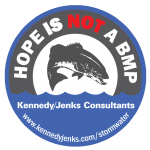An Amendment to the California General Permit for Storm Water Discharges Associated with Industrial Activities (IGP) was adopted on 6 November 2018. If you’ve been following along with the IGP Amendment, you know the hot topics. (If you haven’t, visit our 21 March 2016 blog post and our 18 January 2018 blog post). The California State Water Board received over 600 comments during the public comment period, and while some changes were made, ultimately the draft IGP Amendment and the final IGP Amendment are very similar.
IMPORTANT DETAILS:
- The IGP Amendment effective date is July 1, 2020.
- The TMDL-related requirements do not apply to dischargers with No Exposure Certification (NEC) coverage or that meet Notice of Non-Applicability (NONA) criteria.
- It is essential that facilities know their receiving waterbody, and if that waterbody is a tributary to a larger waterbody, to determine which watershed their facility discharges within.
- Once the receiving waterbody and watershed is known, check the amended Attachment E of the IGP. If the receiving waterbody is a tributary to a larger waterbody, check for it as well. Is either listed in Attachment E?
- If either is on the list, note the parameters that are listed for that waterbody/watershed. Have you identified them as a pollutant in your pollutant source assessment?
- If the answer to both of the questions above is yes, you will most likely be a Responsible Discharger. A Responsible Discharger is a new term that was added to the IGP by this Amendment (defined in Attachment C, the Glossary). Being a Responsible Discharger means the TMDL-related requirements in the IGP Amendment will apply to you.
- Attachment E presents TMDL Numeric Action Levels (TNALs) and Numeric Effluent Limitations (NELs) for many of the listed waterbodies. Both are instantaneous maximum exceedances, which occurs when two or more results for a parameter within a reporting year exceed the value. TNALs are similar to the NALs already in the permit, in that action is required but an exceedance is not a violation of the permit. NEL exceedances are considered violations of the permit. If you expect to be a Responsible Discharger (see previous bullet), know if your receiving waterbody/watershed has TNALs or NELs, or if no new action is required. Also note the effective date, as some of the waterbodies have TMDL effective dates after the IGP Amendment effective date.
- Some details for the onsite and offsite compliance options changed, but the concepts have not. They will still be difficult to implement and may not be possible for all facilities. For facilities with new TNALs and NELs to comply with, however, these alternative compliance options may be worth considering.
Many of the TNALs and NELs are low and challenging to meet. For example, the zinc TNAL for facilities within the watershed of the Los Angeles and Long Beach Harbor Waters TMDL is 0.095 mg/L. This value is lower than any other West Coast industrial stormwater general permit (Washington State benchmark: 0.117 mg/L; Oregon benchmark: 0.12 – 0.24 mg/L). A quick search of the Stormwater Multiple Application and Report Tracking System (SMARTS) industrial total zinc data for the LA Region (Region 4) shows that 76% of the total zinc data submitted is greater than 0.095 mg/L. Even more challenging, this value is an NEL for facilities within the watershed of the San Diego Creek and Newport Bay Toxics TMDL. SMARTS industrial total zinc data for the San Diego Region shows that 77% of the total zinc data submitted is greater than 0.095 mg/L. The TNAL and NEL, respectively, likely won’t apply to all these facilities since the TNAL and NEL are tied to a specific watershed; however, it does highlight that facilities that will be Responsible Dischargers need to take action now to prepare for complying with these new requirements by 1 July 2020.
The California State Water Board has stated they will provide watershed maps and flow charts to help facilities determine applicability and has tentatively said these resources will be available in April 2019. However, the sooner a facility begins planning and preparing to comply with these new requirements, the better off they will be. KJ has followed the IGP Amendment from the beginning, attending several California State Water Board workshops, participating in California Stormwater Quality Association (CASQA) Industrial Subcommittee calls, and attending CASQA conference industrial-related presentations.
Keep in mind, of course, that this update is for information purposes only and does not substitute as professional advice for how to handle specific situations that may arise. If you want advice now on how the adopted IGP Amendment may affect your facility or are interested in more information about this topic or about KJ’s stormwater services, please email us at stormwater@kennedyjenks.com and subscribe to our blog!


Written by Rachel Morgan
Staff Engineer | San Francisco, CA
© KJ Consultants, Inc. 2018. All rights reserved. This information may not be copied, reproduced, or distributed without written permission. For permission, please contact us at stormwater@kennedyjenks.com.

